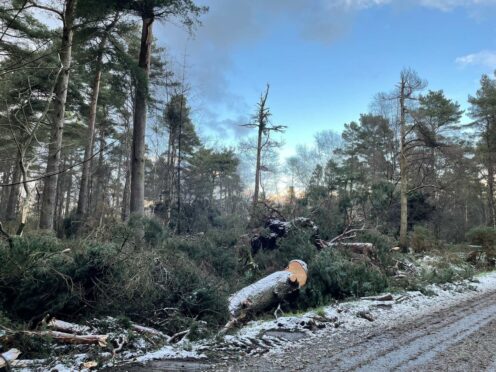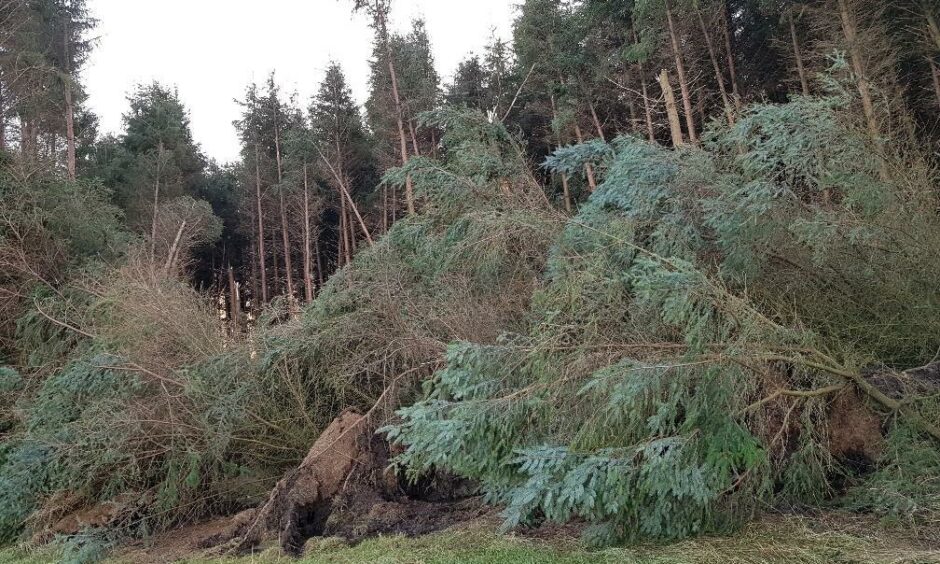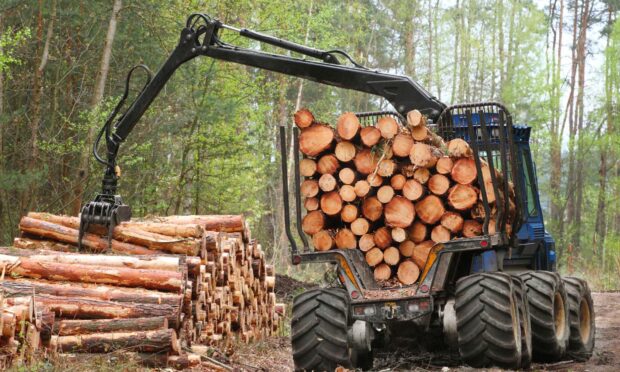After 35 years working in forestry, I’ve seen plenty of storm damage. But Storm Arwen was something else.
What made Arwen stand out was not just the speed of the wind, but its direction. Moray and Aberdeenshire are used to strong winds from the west, but winds of real power from the north are far less common.
This made Storm Arwen, literally, the perfect storm – a once-in-a-generation weather event. To take down trees of the size it did was almost unbelievable.
Seafield Estates, like many other areas in the north-east, was badly hit.
We estimate that more than 120,000 trees were damaged in the storm on the Cullen Estate, with the area from Banff to Buckie particularly badly affected. The worst damage was between Banff and Portsoy.
Some of the trees have completely fallen over, roots and all, whereas others have snapped – which causes a lot more challenges.
We still don’t have the full picture – we’ll know more when we can get around the whole estate and look at aerial drone surveys, and satellite data.
We had almost finished the planned harvesting of our trees in 2021 when Arwen hit.
We have a detailed Forest Plan, agreed with Scottish Forestry, which outlines how many trees we will harvest each year.
This is carefully put together, considering the wide range of ages and species of trees across the estate – but Storm Arwen has blown that plan apart.
Our first consideration after the storm was, of course, public safety, and removing trees that posed an immediate risk.
On the first weekend, we were very busy getting trees off roads on the estate and advising people who walk in the forest to take significant extra care.
With so many trees down, or snapped, the next step is to work out which areas are the priorities – and after removing trees for safety reasons, there are a range of considerations.
One is the species. We have a wide range of windblown species, but Scots pine is being treated as a priority.
It deteriorates more quickly than other species once it comes down and develops ‘blue stain’. This means that veins appear in the wood and make it unattractive to buyers, so it has to be removed and sold more quickly.
A glut of Scots pine could be a challenge, but it has a range of uses – for fencing, pallets, packaging and in construction – so I’m optimistic the markets will be there.
Snapped timber is also more difficult to sell; it loses volume and value as the damaged sections have to be cut out and either left on site or, if possible, recovered for biomass at a much lower value that the sawlog it might have been.
There are numerous ways that windblown wood can lose its value and that’s before you consider the additional and unplanned cost of removing it.
We have regular contractors working for us, but windblow work is complex and time-consuming, which adds time and cost.
It’s not just about getting out the fallen trees – you might need to remove the trees left standing nearby as they will otherwise be susceptible to coming down in milder winds.
Skilled contractors are in real demand at the moment as we are not alone in having large numbers of trees down.
We are allowed to remove windblown trees posing a danger to public safety, but any others taken out require felling permissions from Scottish Forestry.
There are lots of people asking for permissions just now, so we need to work closely with Scottish Forestry to get the go-ahead to fell the trees, while considering the immediate impact on our 2022 harvesting programme – and working with them on that too.
On the positive side, most trees that have come down are mature, many 50-80 years old, and in generally good shape to sell to wood processors.
The challenge is to manage the flow of wood out of the forests and into the sawmills and wood processing plants like James Jones & Sons, who have sites at Aboyne, Mosstodloch and Forres.
The sawmills obviously have a limited demand of wood they can process at any one time, so we will work closely with them to ensure the flow works for everyone.
Forestry and wood processing is a resourceful industry and good at pulling together at times of crisis.
It’s all about open, honest conversations with the wood processors about what we have and what they are able to take, and when – then working out how to manage that.
We’ll also talk about staging deliveries and pricing. There are many factors affecting timber prices and I’m confident the windblow will have a relatively limited effect.
Some people will ask whether we could have done anything differently, in terms of how we planted and managed our forests.
I have thought about this a lot and I genuinely believe we couldn’t have prevented the damage caused by Storm Arwen.
This was a ferocious, once-in-a-generation event. When you have the wrong wind coming in the wrong direction at that terrifying speed, it can take anything down.
● Will Anderson is chief executive at Seafield and Strathspey Estates.


